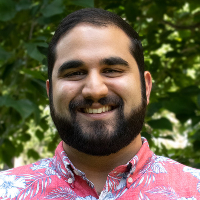Wondering how your GlobalGiving donation gets to local nonprofits from Guatemala to Ghana? Senior Disbursement Associate Rishabh Bajekal explains the process.

A: I am in charge of sending disbursements, which basically means sending money to all of our amazing partners and grantees. That involves working with our donation systems to ensure we have the correct balance for each organization and then working with our partner financial institutions to send the payments.
A: We send money to our partners around the world through bank transfers. When a nonprofit organization becomes a GlobalGiving partner, they provide their bank details and information about where they will receive funds. For organizations with an account outside of the United States, we can send money in either US dollars or in their local currency.
For example, a nonprofit in Vietnam would have the option to receive their international donations in US dollars or Vietnamese dong. For US dollar disbursements, we will send a wire transfer from our bank. For other currencies, we have a partner financial institution that uses local banking networks to exchange into the appropriate currency and then deposit in the nonprofit’s bank account.
A: After the US, the top five countries where international donations come from are the UK, Canada, Australia, Germany, and Mexico. And aside from the US, most donations are sent to India, the UK, Kenya, South Africa, and Australia.
A: About 2,000. But it has been as high as 2,700 disbursements some months. We typically send the most disbursements in January, which is when we send donations made in December (the most popular month for charitable giving!).
A: We send disbursements from international donations to an average of 110 countries per month, but it can be as many as 120 countries some months.
A: I find it particularly gratifying to support education projects and projects that provide healthcare and housing to underprivileged communities. It is also really heartwarming to send disaster grants because I know our partners are getting support at a time of critical need.
A: I spend a lot of time thinking about free will and (if I may stray into theology) how our free will interacts with an all-powerful “Divine.” Recent interesting theories from philosophers like Jurgen Moltmann and Thomas Jay Oord explain how we can ease the tension by redefining power as something that looks more like love. Essentially, they posit that the power the Divine displays is not power over, authoritarian and controlling. Rather, it’s power under. It is always beneath us, supporting, guiding, and loving, but never coercing. This uncoercive power maintains our free will but is also pervasive and strong enough to accomplish amazing things.
This idea has secular, practical applications as well. Some of the best leaders are not authoritarian—they lead by loving, caring, and supporting us in achieving the goals we have defined for ourselves. I think the work we do at GlobalGiving to support community-led organizations is that power under, servant leadership in action.
We are not looking to exert control over our partners and grantees, tracking how they spend every penny and forcing a specific cause on a community that doesn’t see that as the problem.
We want to empower communities and support organizations to amplify their impact. I always aim to incorporate this principle into my work, and I’m hopeful that we’ll transform philanthropy in this way.
Find exactly what you're looking for in our Learn Library by searching for specific words or phrases related to the content you need.